Discovering the Ancient City of Ephesus, Turkey
There’s just something magical about wandering down the paths where ancient Emperors once walked; close your eyes and you might just hear the echoes of frenzied cheering and the clashing of swords. Keep your eyes closed and your surroundings start to swirl with grandeur as history comes to life all around you – such is any experience at Ephesus, one of the world’s best-excavated examples of the ancient world.
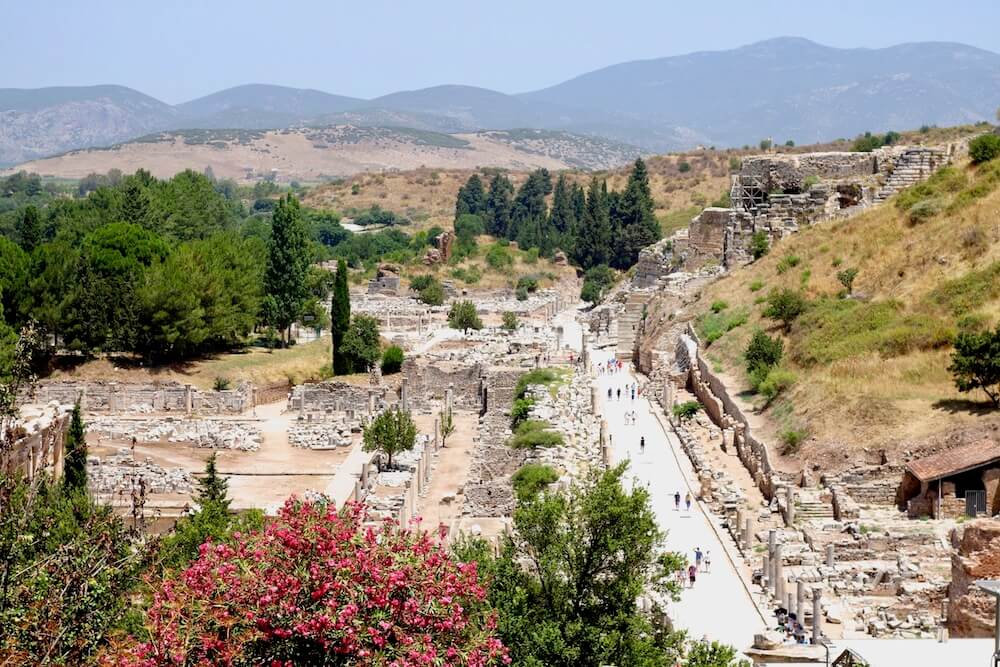
A stark reminder of the city’s former glory, Ephesus offers visitors a treasured glimpse into the legacies left behind from the past. Comprising the largest collection of Roman ruins in the eastern Mediterranean region, Ephesus’ towering marble columns, impressive structures and ornate carvings are nothing short of spectacular.
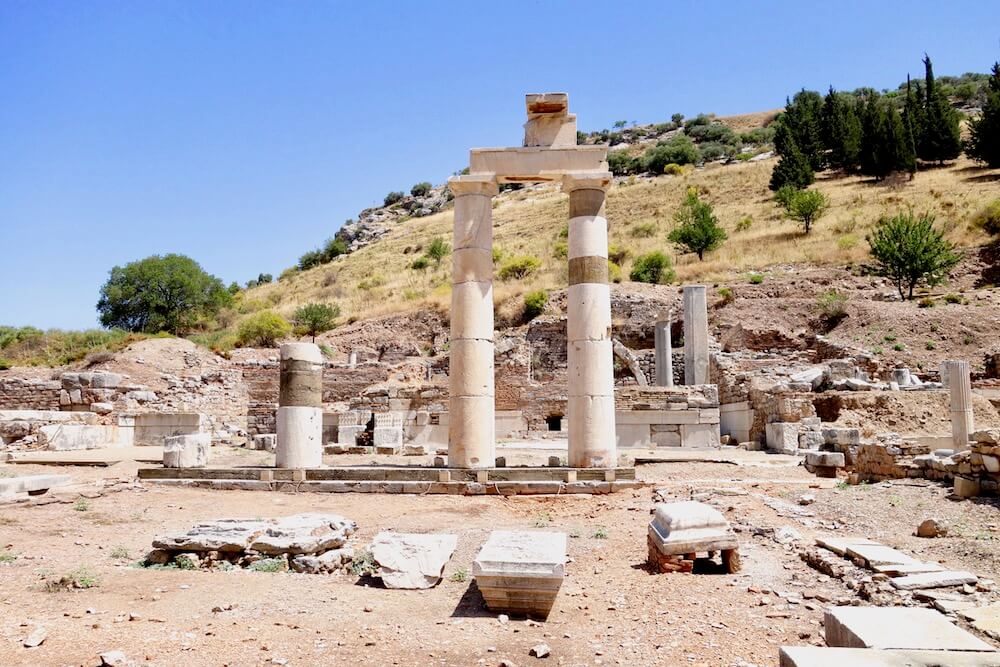
Built in the 11th century BC, Ephesus was once 1 of the 12 cities of the Ionian League. Ephesus was said to be home to the mighty Amazon warrior women, who named the city after Ephesia, their revered queen. The city contained the Temple of Artemis, which was one of the 7 wonders of the ancient world. In the 1st century, Ephesus then played an integral role in the introduction of Christianity, which proceeded to be propagated under Roman rule. In the 1st and 2nd centuries AD, Ephesus became the capital of the Roman province of Asia. St. Paul even preached at, and spent 3 years in, Ephesus!
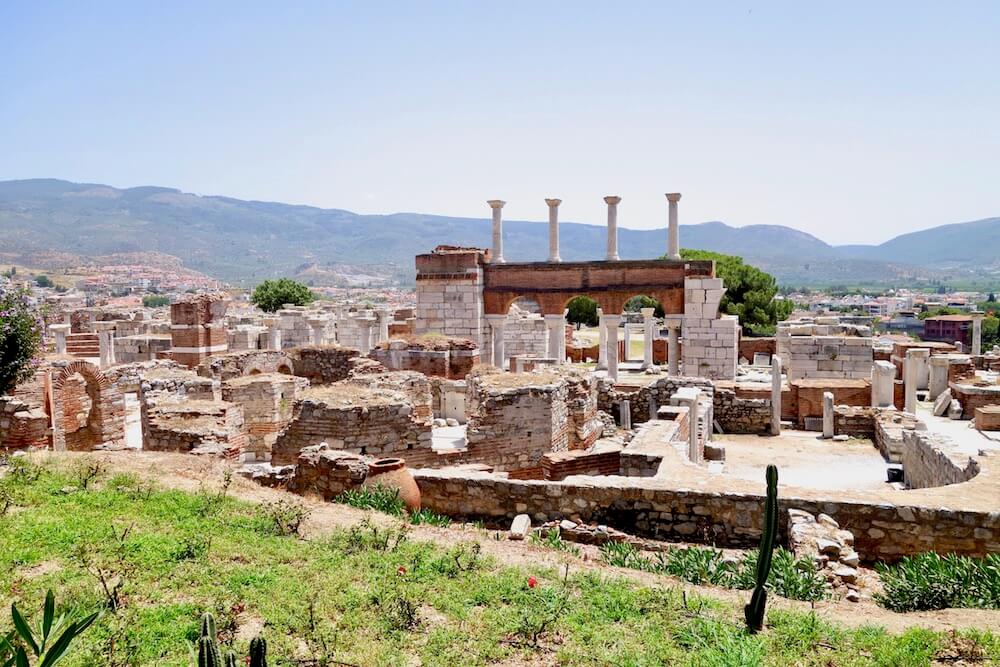
However, not all was rosy in Ephesus’ many years of history. In AD263, the Goths ravaged the city, which was also captured and destroyed by Tamarlane’s Mongols. When the Ottomans established control in the 15th century, Ephesus was finally left to ruins and abandoned. The city was then left devastated and forgotten until 1863, when excavations first began.

Every inch of Ephesus is oozing with history; if walls could speak, one could easily spend hours being regaled by captivating stories from the past.
For a more enriching experience, I recommend renting an audio guide at the gate or hiring a tour guide for your visit. You should also set aside at least 3 to 4 hours to fully explore the confines of Ephesus; anything less wouldn’t do it justice.
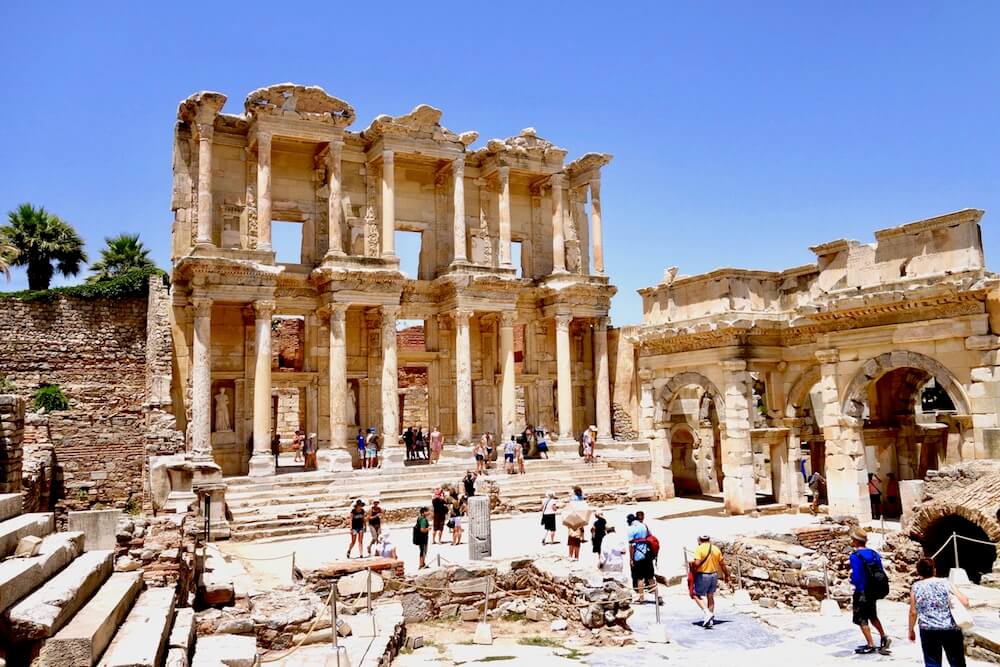
Start your day early by visiting Ephesus’ most iconic structure – the Celsus Library. This site does tend to get rather crowded as the day progresses; it’s hence best to visit it early when it’s still devoid of crowds.
Feast your eyes on a magnificent structure that was once the 3rd largest library of the ancient world! The library was built as a tribute to Gaius Julius Celsus Polemaenus, a governor of Roman Asia. Celsus’ sarcophagus still remains preserved in a crypt under the structure till this very day.

Built in 117 AD with a capacity of 12, 000 scrolls, the Celsus Library is truly a sight to behold. The library is adorned with various statues that symbolise the virtues of Celsus, such as valour, intelligence and knowledge.
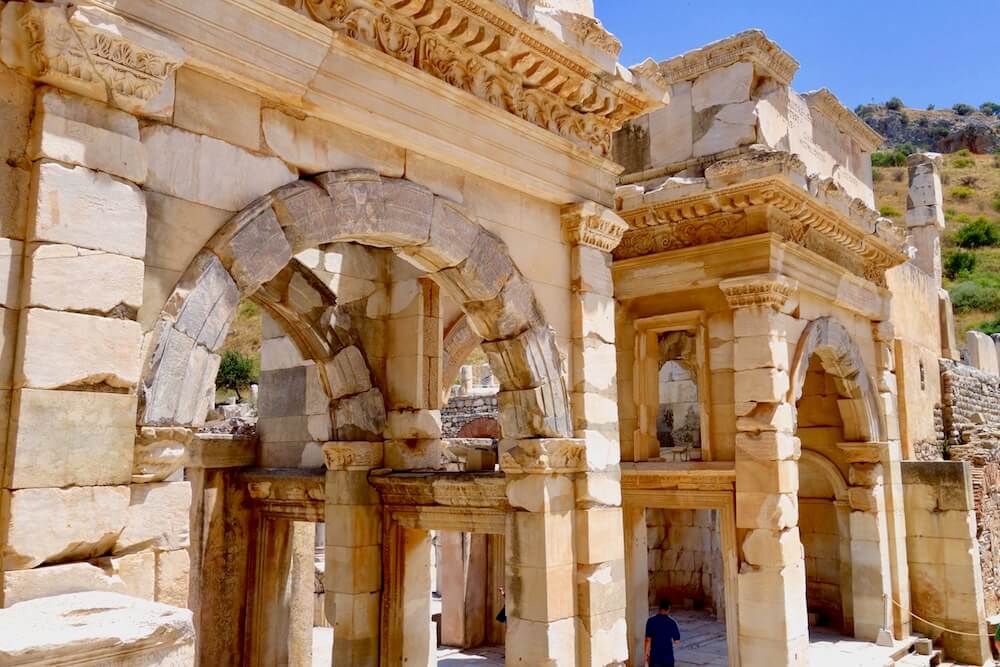
The Mithridates Gate next to the Celsus Library comprises a triple-vaulted passage to the Agora, which functioned as the market square.
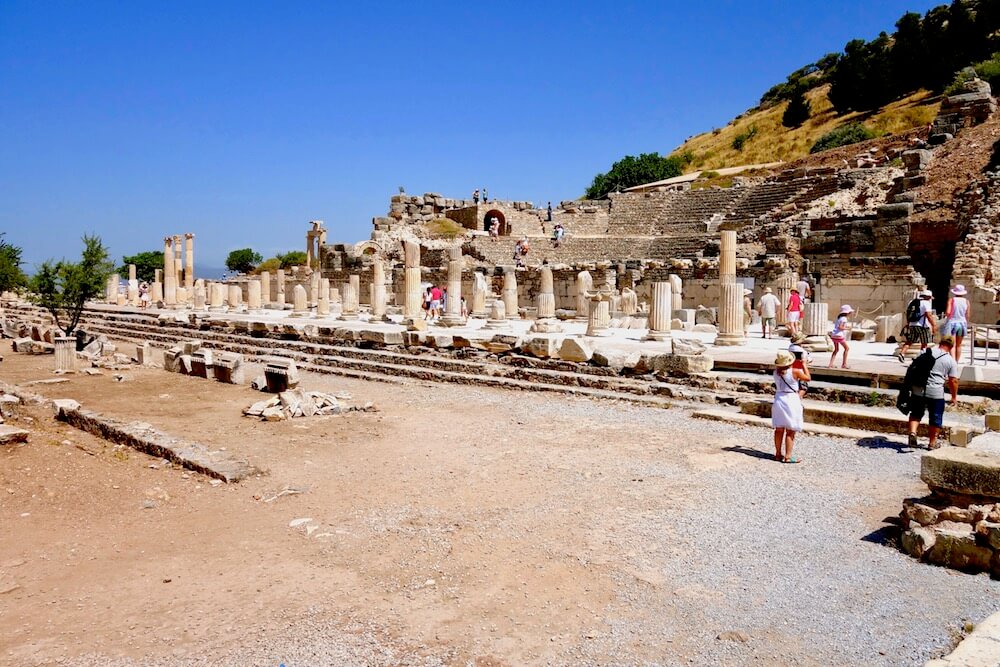
The shops in the Agora marketplace specialised in the trading of various goods and, as stories go, even slaves brought in by sea.
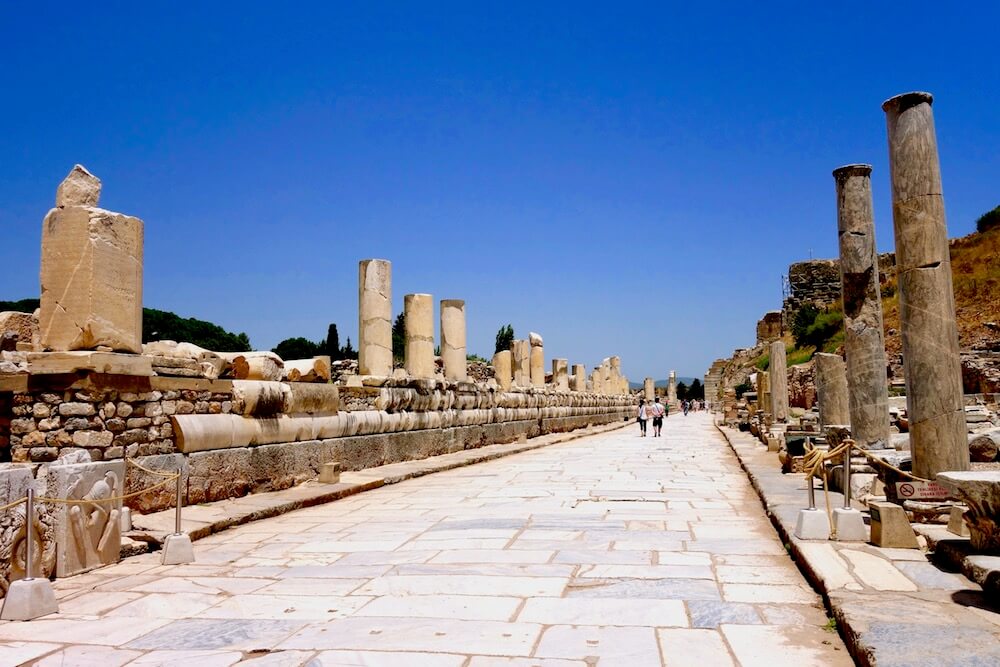
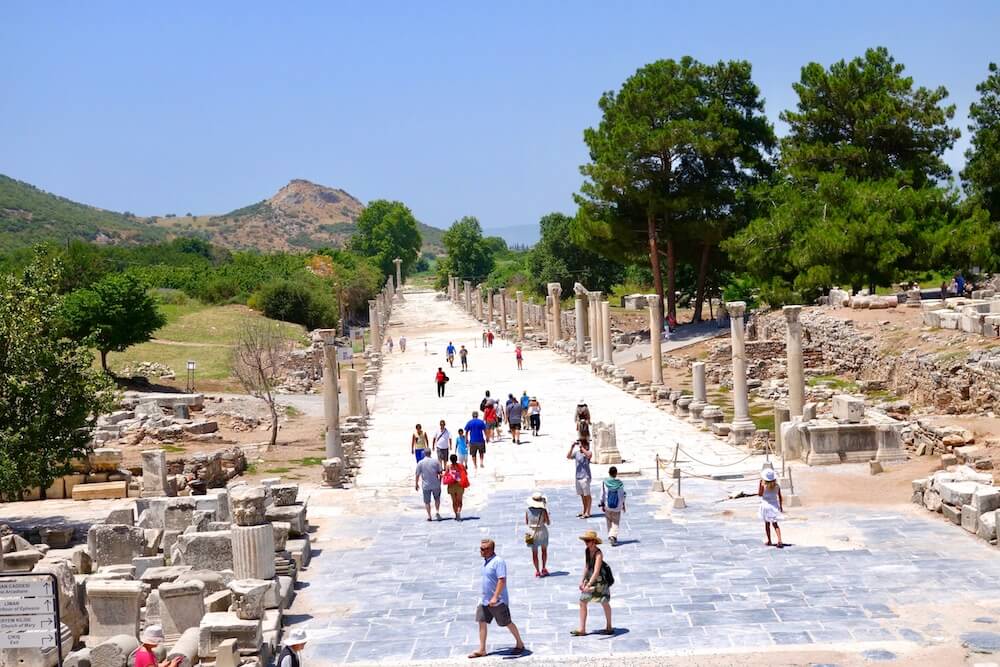
The Marble Road connects Celsus Library and the Theatre. Interestingly, the Marble Road also leads to the Private House, a secret brothel – which can also be found opposite the Agora.

The marble has several carvings etched onto its surface, with inscriptions depicting a footprint, a heart, a cross, a woman and so on. Many different interpretations surround these carvings but the most popular rendition goes like this: the footprint and the hole in the marble were a test to see if you were worthy to buy a woman’s love. To prove yourself, your foot had to fit the size of the footprint and you had to have enough coins to fill the hole; only then were you permitted to enter the brothel. Otherwise, those that failed were pointed in the direction of the library.
The Private House was part of a larger complex that contained both the Scholastica Baths and Latrines, both of which date back to the 1st century.
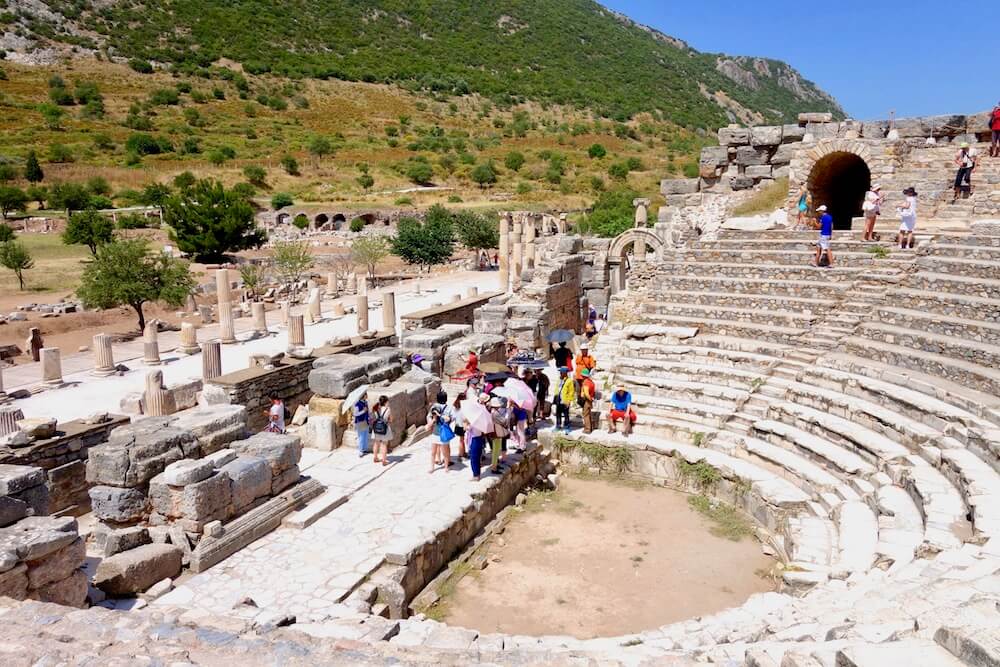
The majestic Theatre has a capacity of 25, 000 people, and was where St. Paul used to preach. In addition, the theatre hosted various concerts, plays and even animal or gladiator fights. Built in the 3rd century BC, this theatre is said to be the largest outdoor theatre in the ancient world! The 1, 500-seater Odeon is a smaller version of the Theatre, which was used both as a concert hall and as a venue for meetings of the Senate.
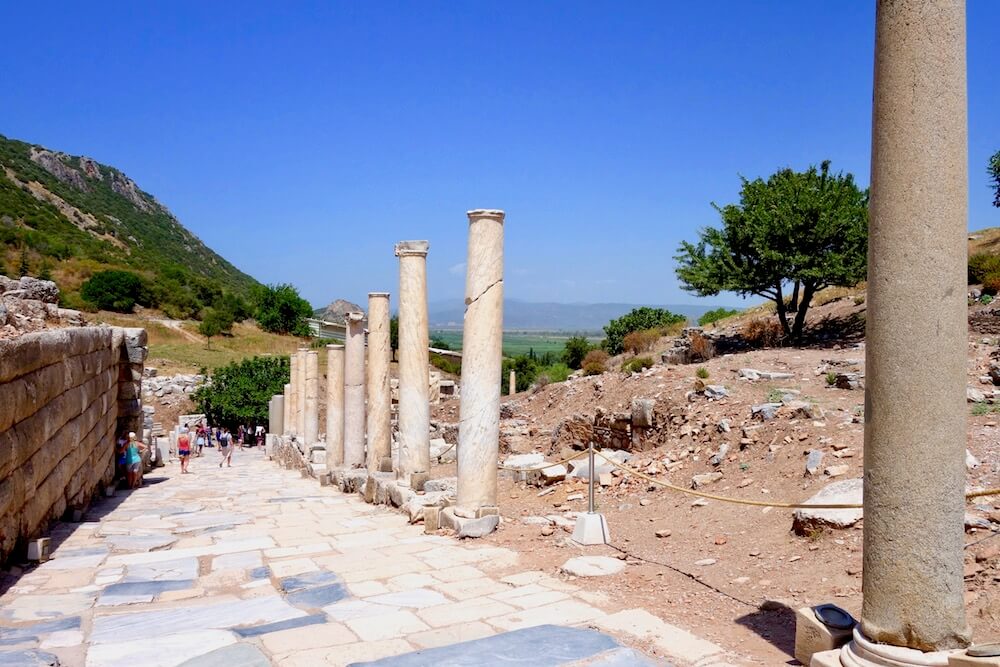
The theatre is connected to the former harbour via the Arcadiane, a splendid marble road lined with columns.

The end of the Marble Road is marked by Hadrian’s Gate, which connects to Curetes Street. Curetes Street will also bring you to Hercules Gate, which is recognised by the image of Hercules donning a lion’s skin.
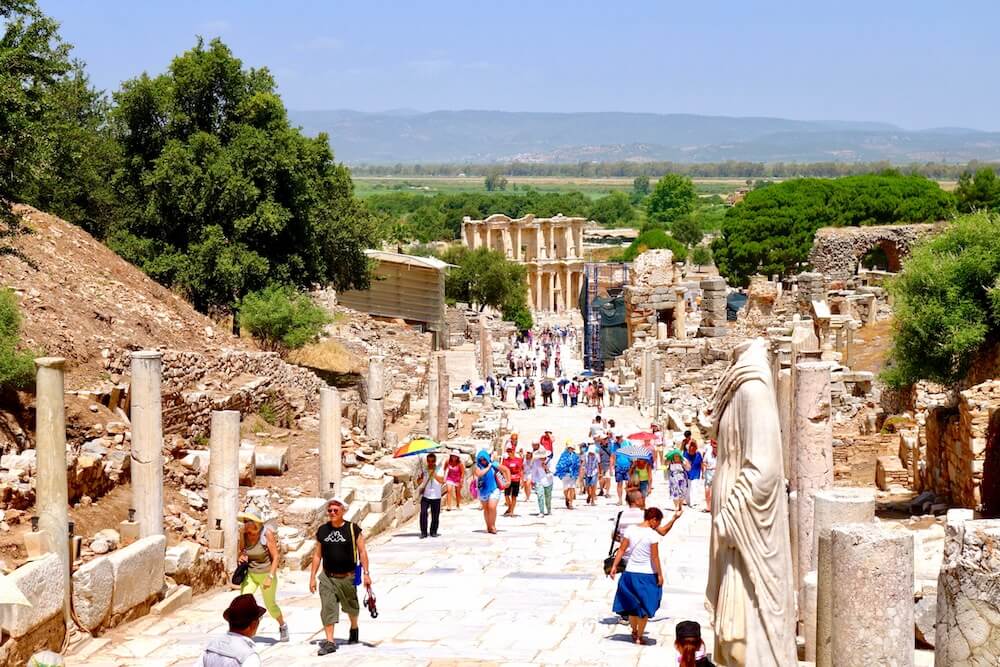
Comprising one of Ephesus’ 3 main streets, Curetes Street runs between Hercules Gate and the Celsus Library. The street was home to houses that belonged to Ephesus’ rich, and was previously lined with plenty of shops, restaurants, fountains and statues.
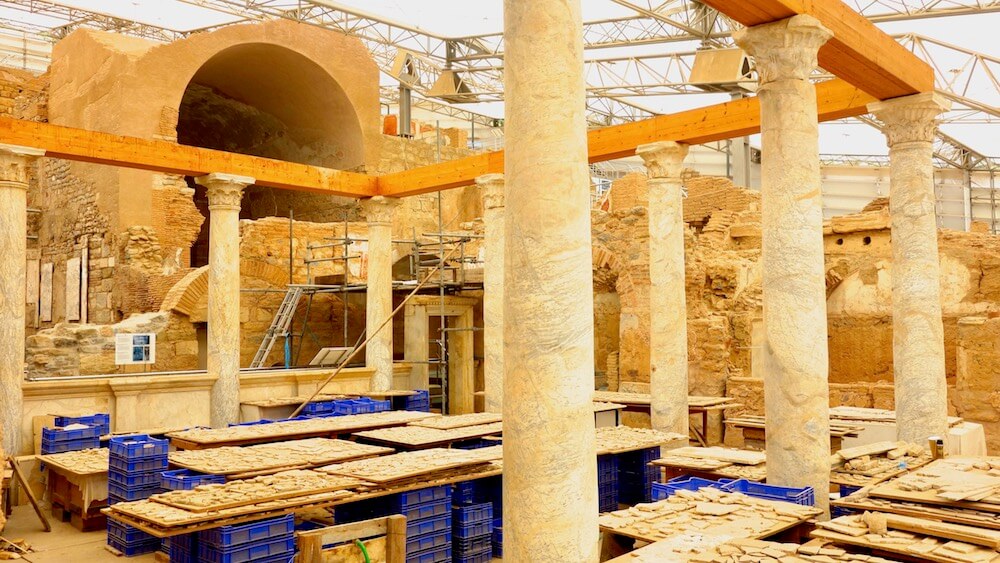

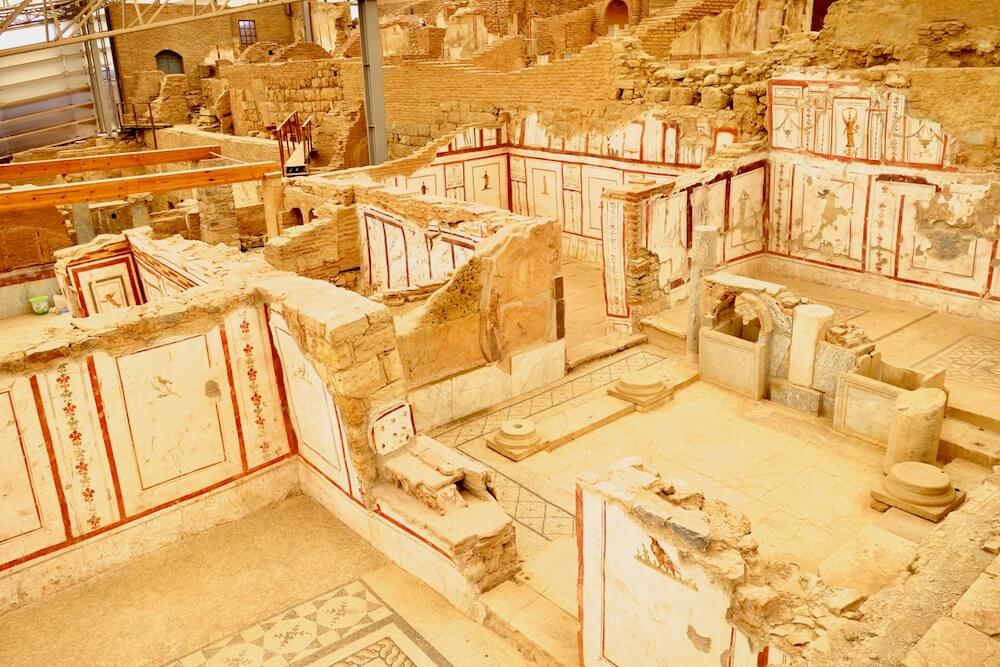
Located next to Hadrian’s Gate, the Terrace Houses offer greater insight into the life of the rich. Concealed under a roof, the Terrace Houses show visitors a glimpse of what luxury looked like in the past. Dating back to the 1st century BC, the Terrace Houses were owned exclusively by the rich and decorated with elaborate frescoes. Unlike other houses, these residences enjoyed ready access to heating and hot water.
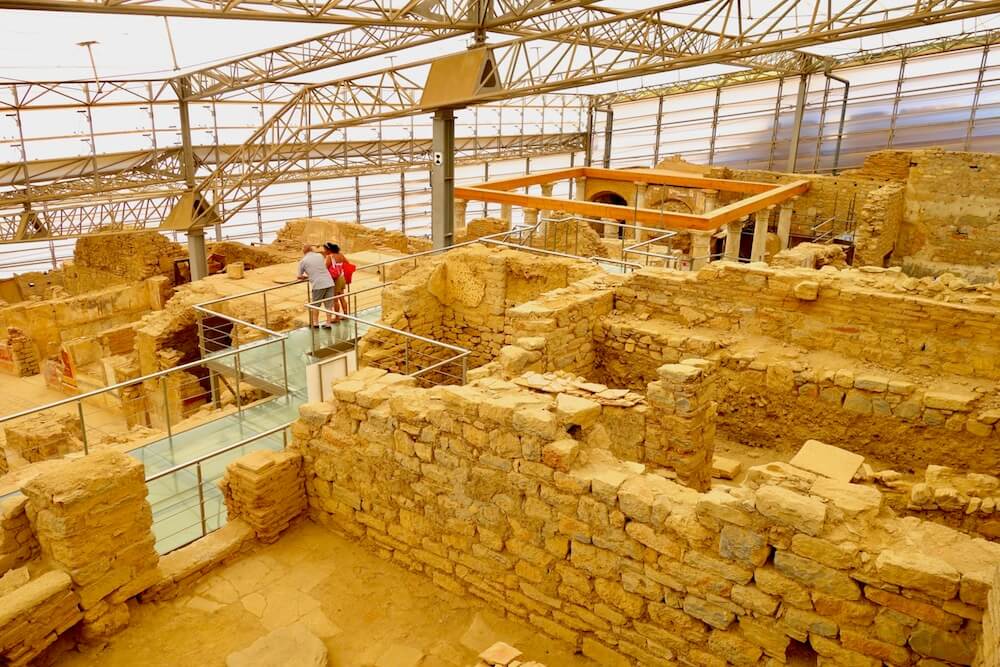
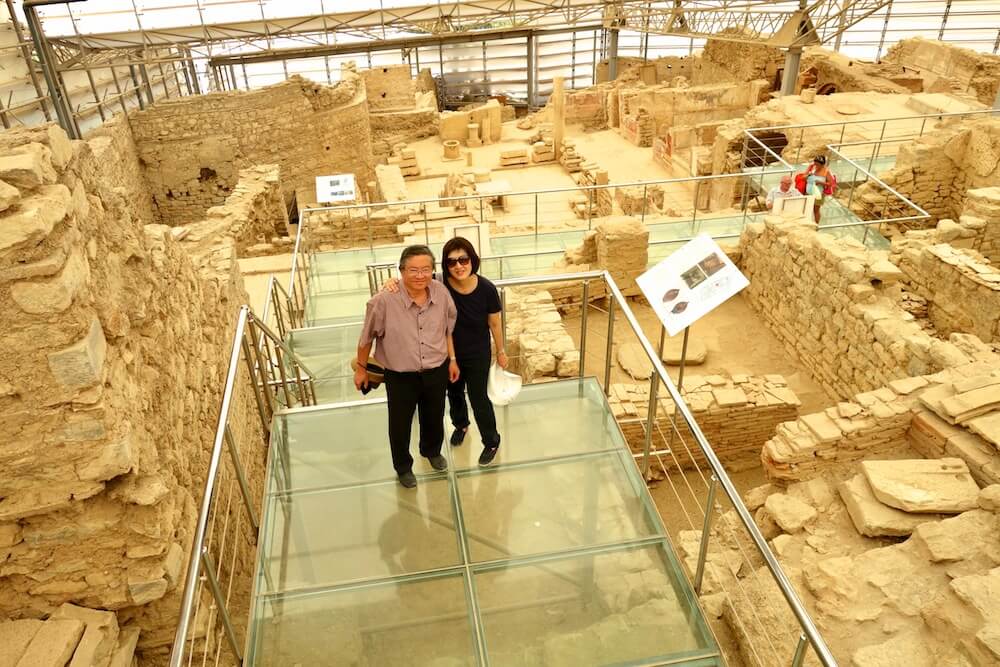
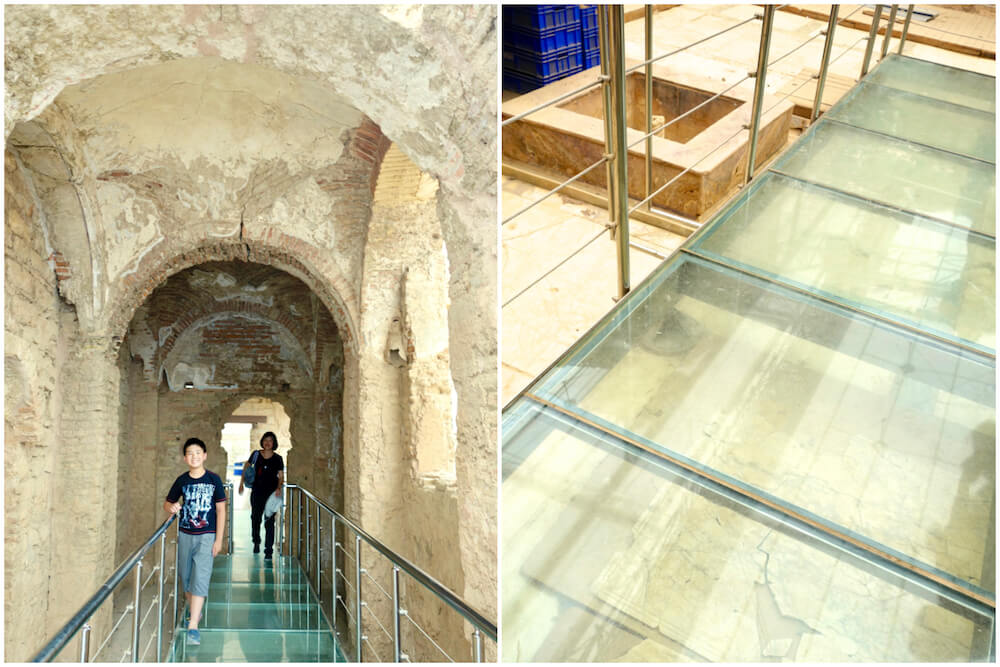
You’ll explore the complex via a maze of glass floors, which were constructed to protect the mosaic floors. Do note that an additional entry fee of TL45 (~SGD9) is required to view the Terrace Houses.
If you choose to stay on Curetes Street, one must-visit site is the Hadrian Temple. The goddess of fortune is depicted on its facade, which is known for its 4 Corinthian columns. The temple was dedicated to Emperor Hadrian, to honour his visit to Ephesus in 128 AD. The arch inside the temple has an illustration of Medusa, who’s surrounded by friezes that tell the story of how the city was founded.
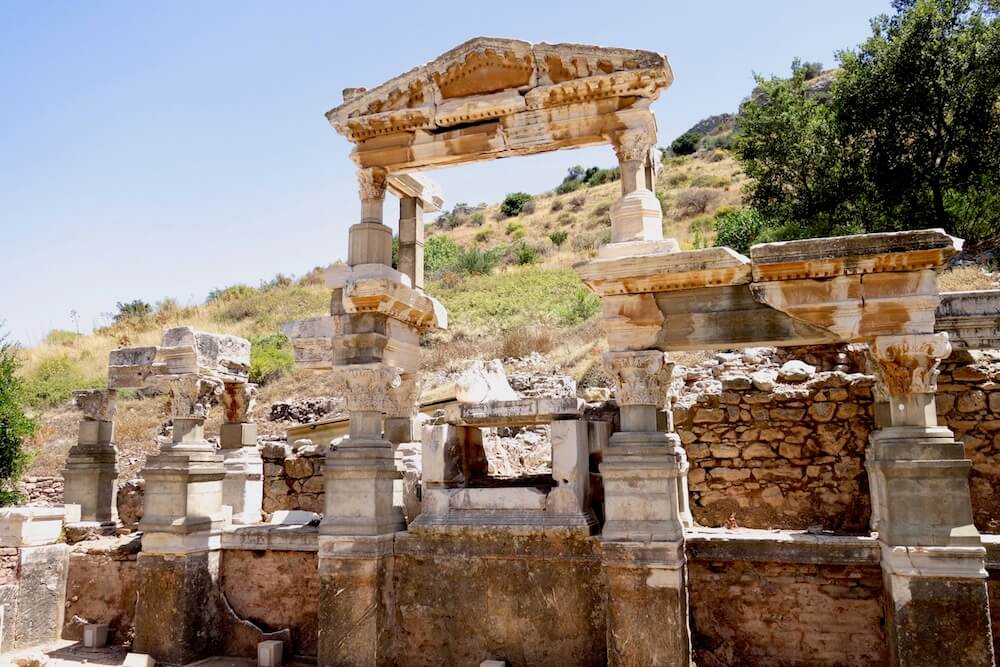
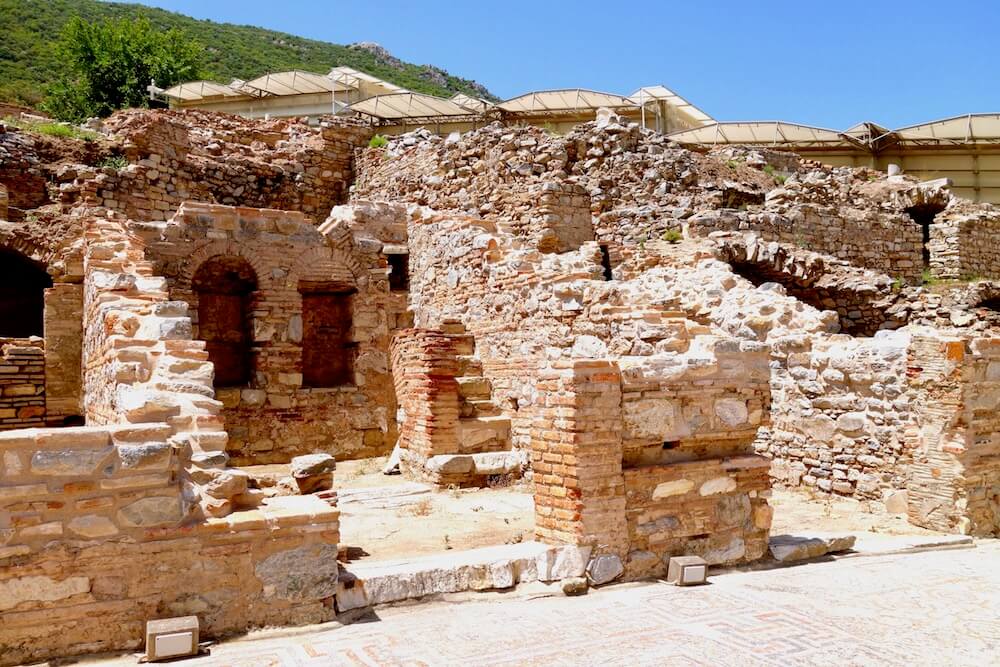
The Nymphaeum of Trajan was a fountain built in honour of Emperor Trajan and Artemis of Ephesus. The structure stands as a tribute to the contributors who made the City of Ephesus what it was at the height of its glory.
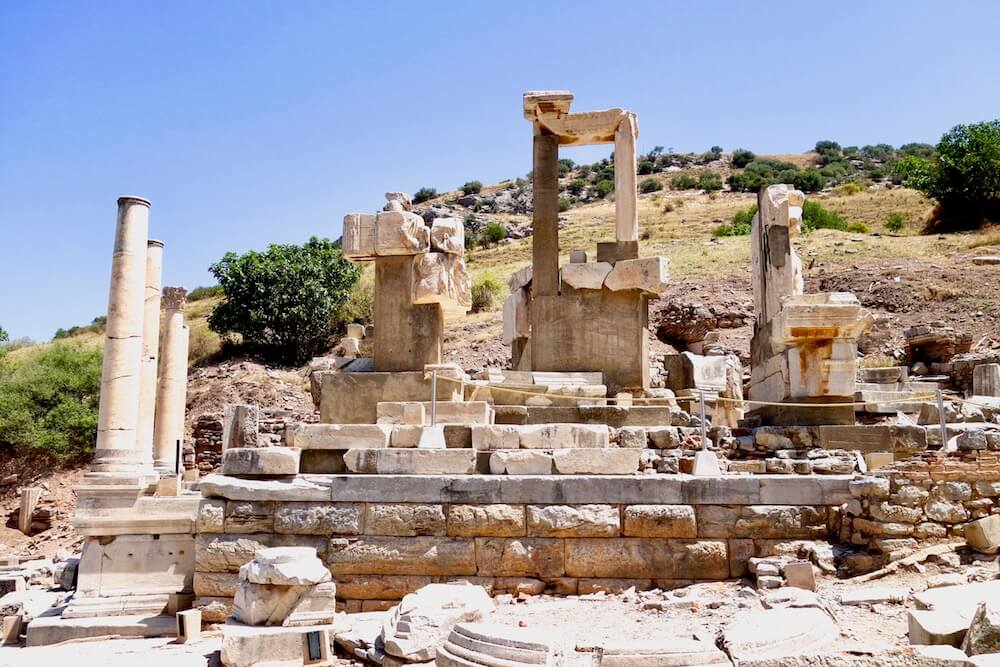
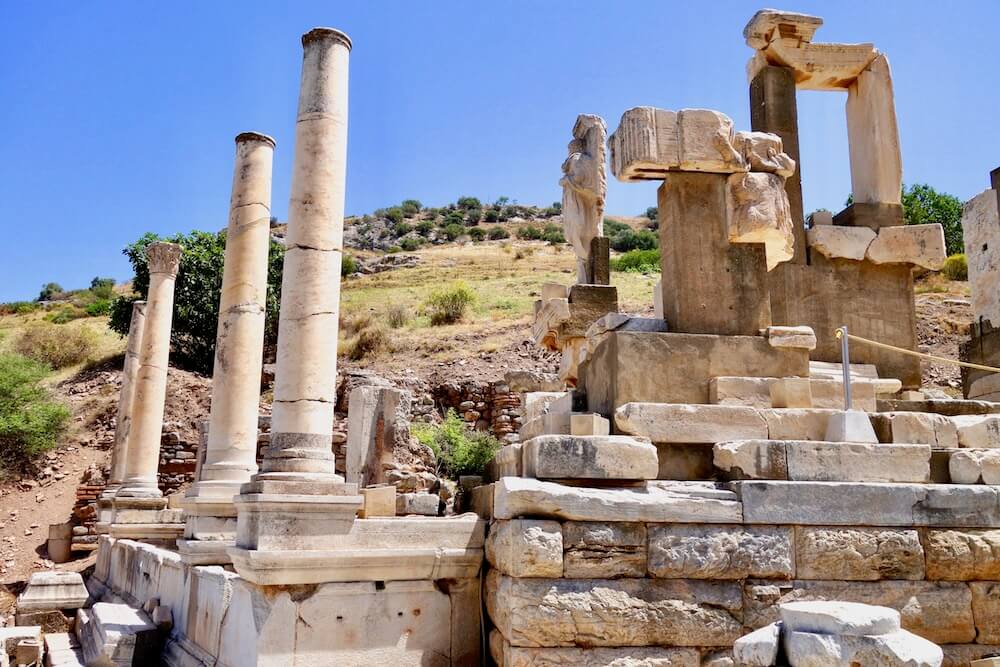
Built in the 1st century AD, the Memmius Monument was built by Sulla, the grandson of the dictator Memmius.
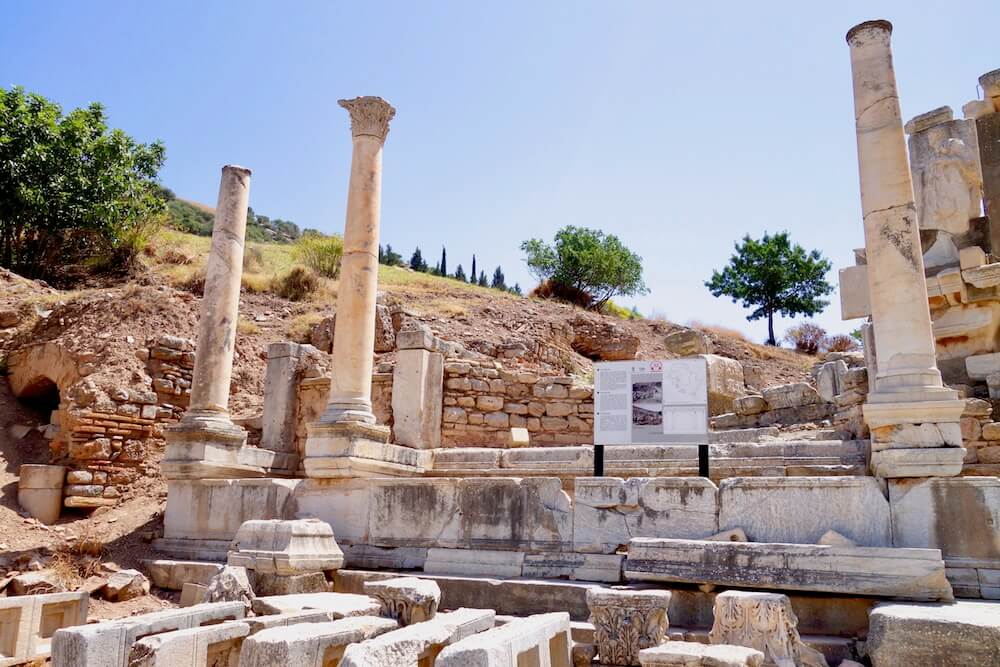
If you chose to rent an audio guide, keep your eyes peeled for the various signboards – such as this one at the Fountain of Hyderion next to the Memmius Monument. These signboards give a rough summary of the site’s history, as well as denotes which channel you should be tuning into for more information.
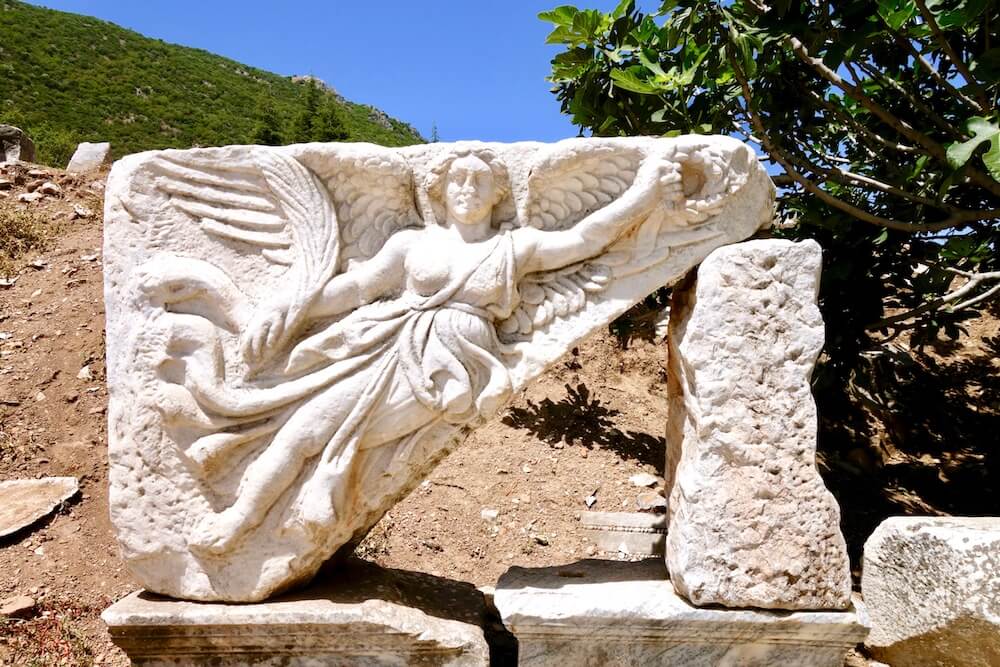
See if you can spot the stone plaque depicting Nike, the Goddess of Victory! Nike is usually depicted with a wreath of bay leaves in her hand, which she used to reward the victors of battlefields.
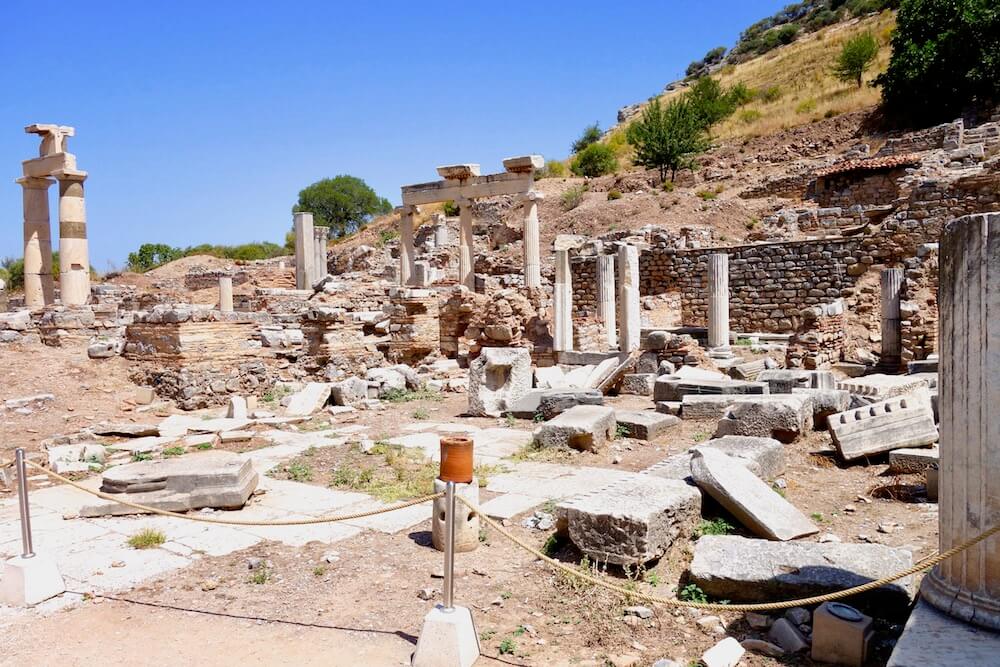
Previously a cultural and educational centre, the Church of Mary was transformed into the first church dedicated to the Virgin Mary.
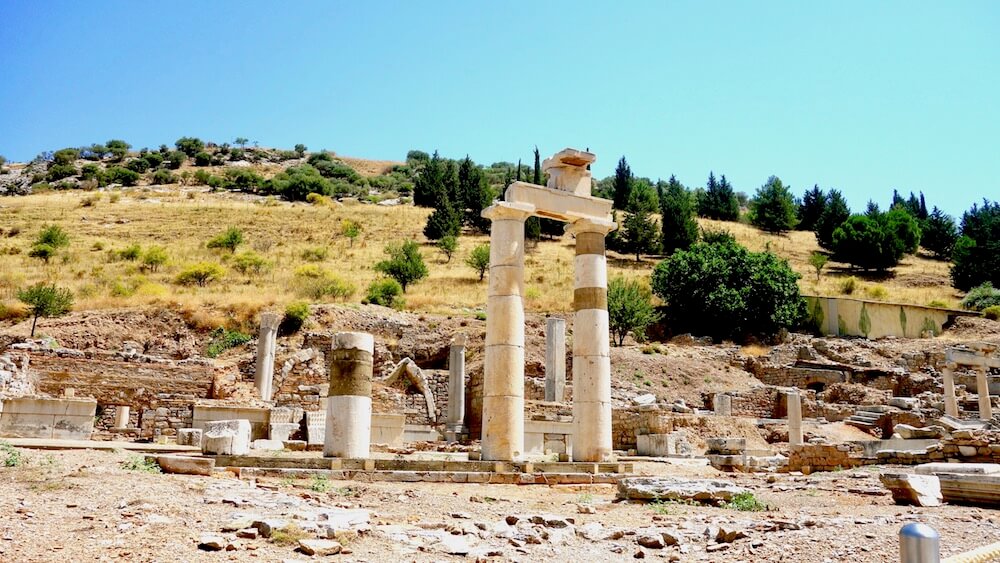
The Prytaneion – or City Hall – housed the state archives and famed statues of Artemis. The Prytaneion stood behind the Temples of Dea Roma and Divus Julius, both of which were constructed to unite the people.
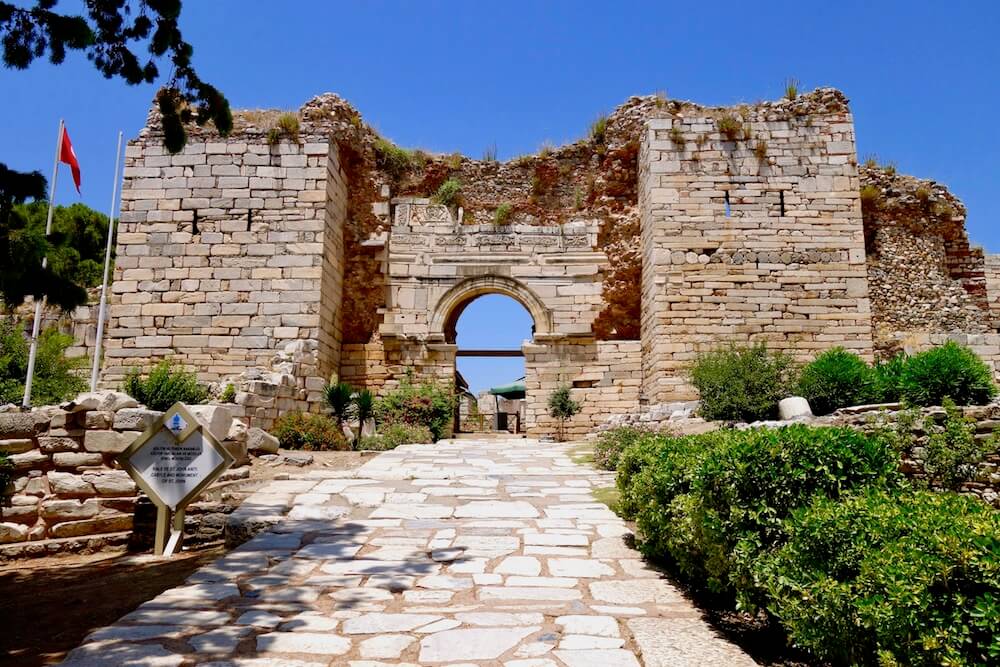
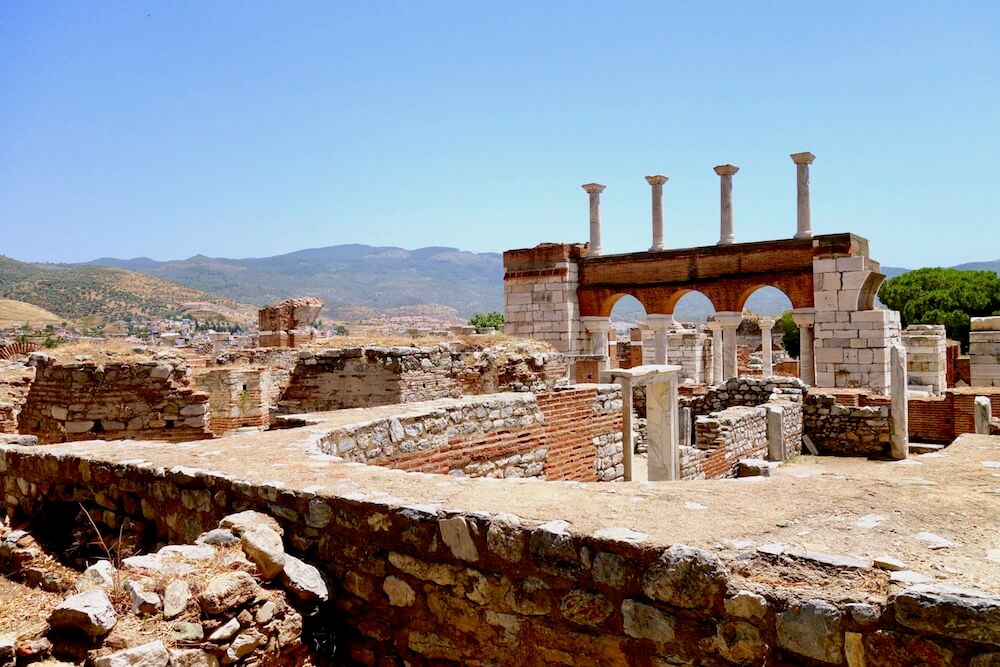
Pay a visit to the St. John Basilica, the site where the tomb of St. John supposedly lies. St. John was one of Christ’s closest disciples, as well as the writer of the Fourth Gospel and the Book of Revelation.
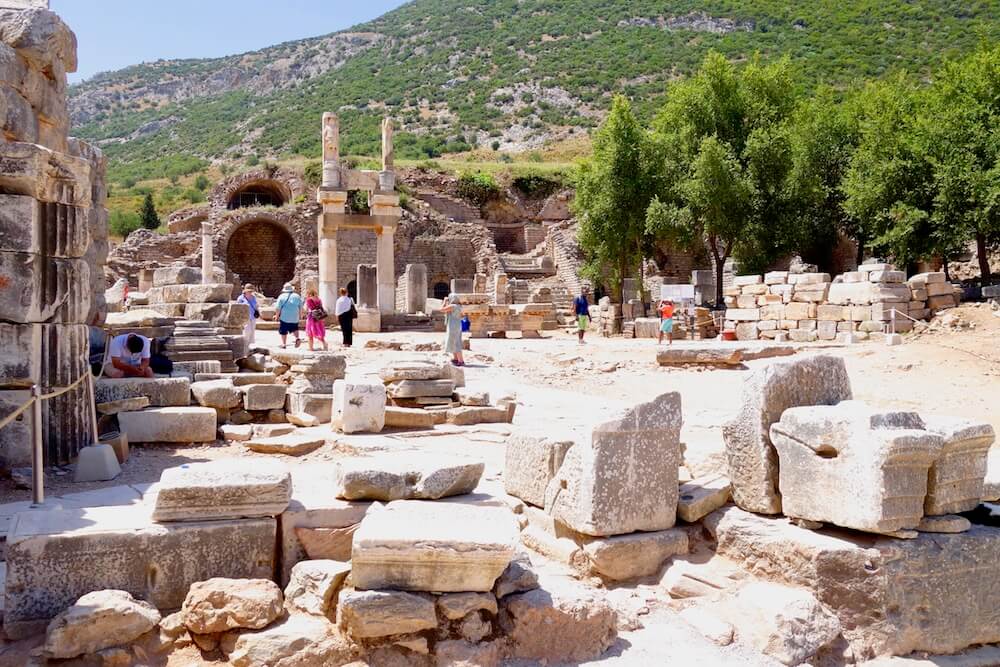
It’s easy to get lost in Ephesus but don’t miss out on the Domitian Temple, which was the first building in Ephesus to be dedicated to an Emperor.
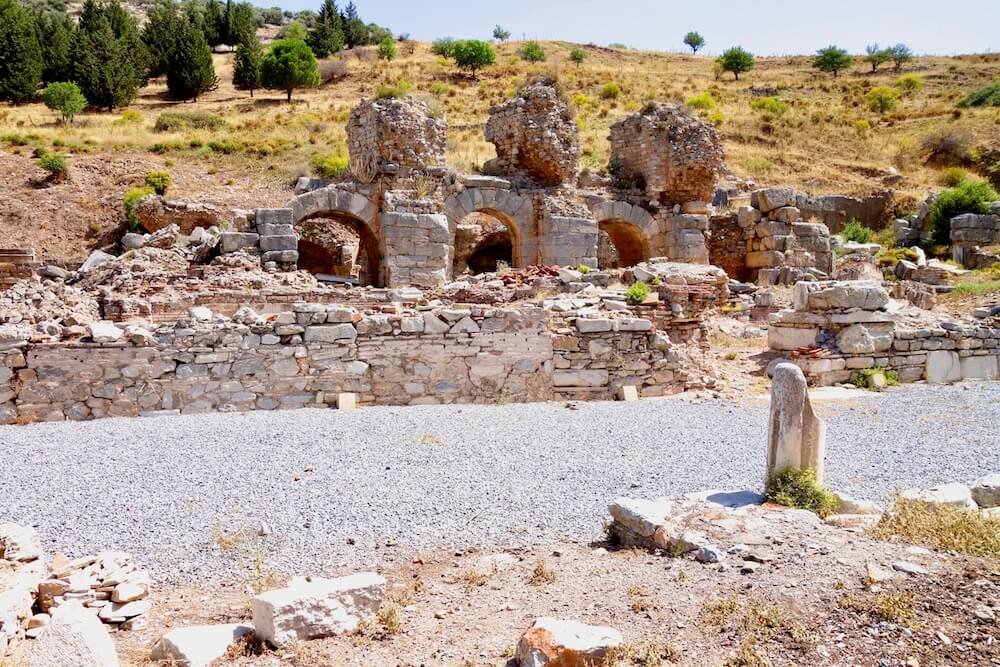
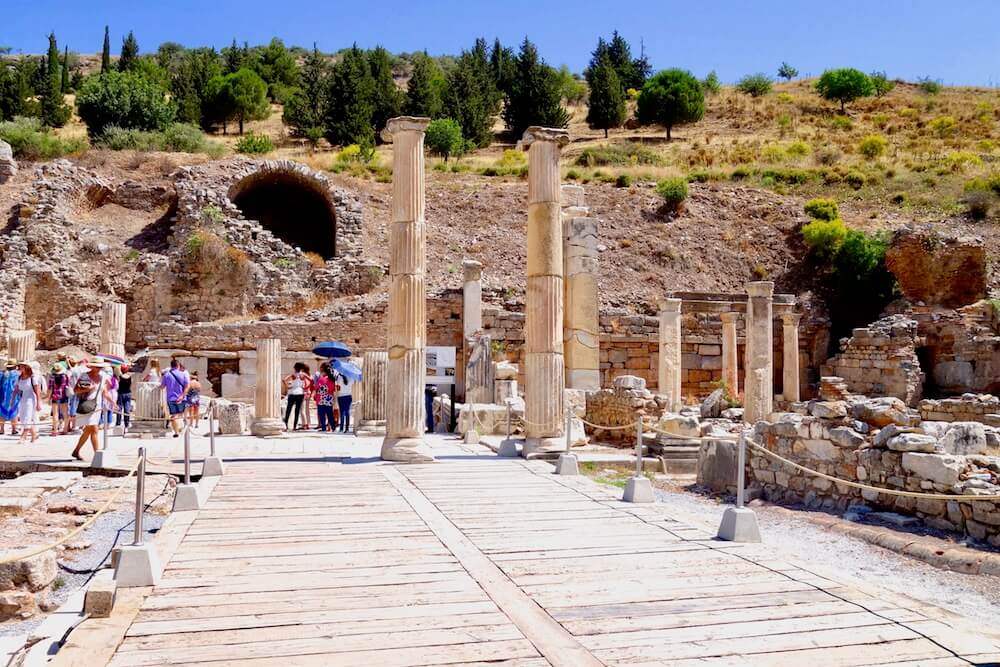
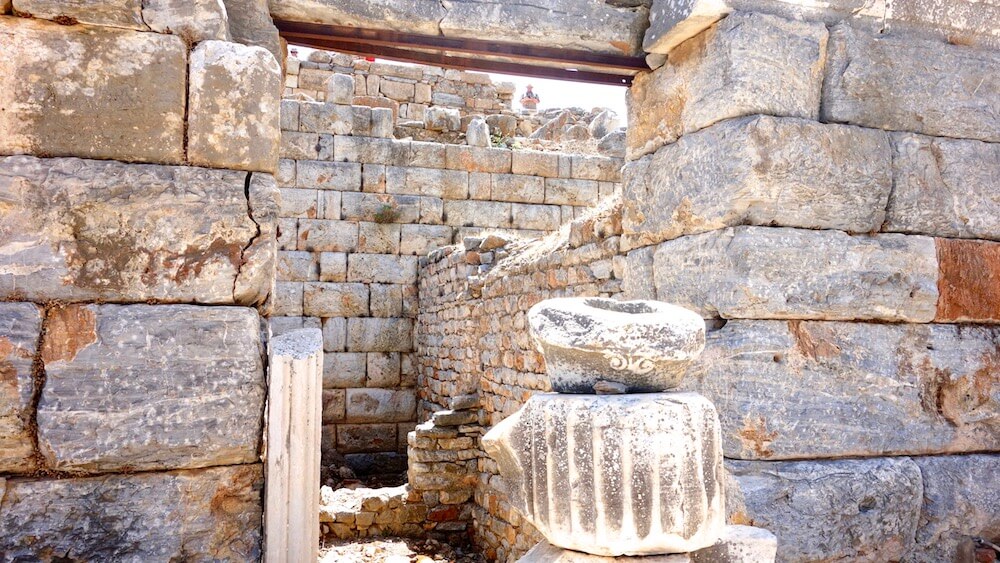
There are so many glorious ruins in Ephesus to explore – it might take you hours to fully see everything that the compound has to offer!
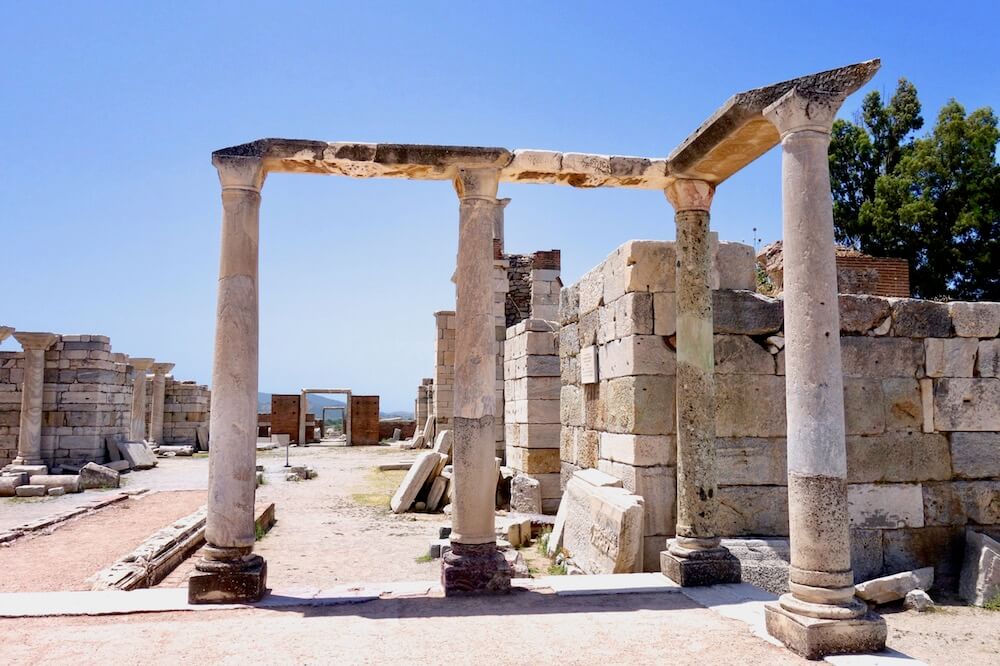
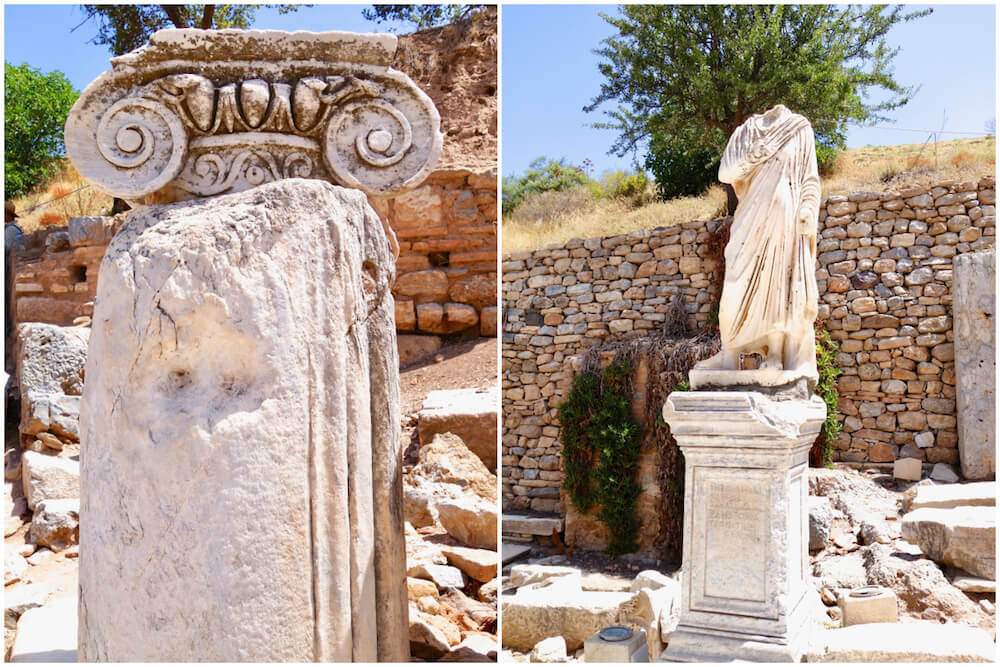
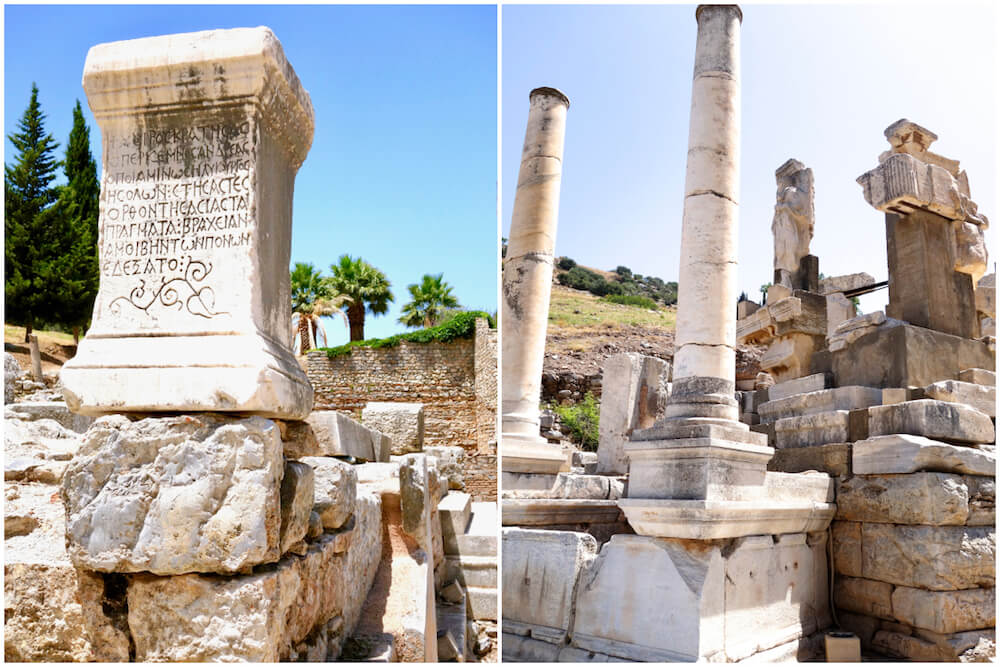
Take your time to see it all and slowly savour the intricacies of the place.
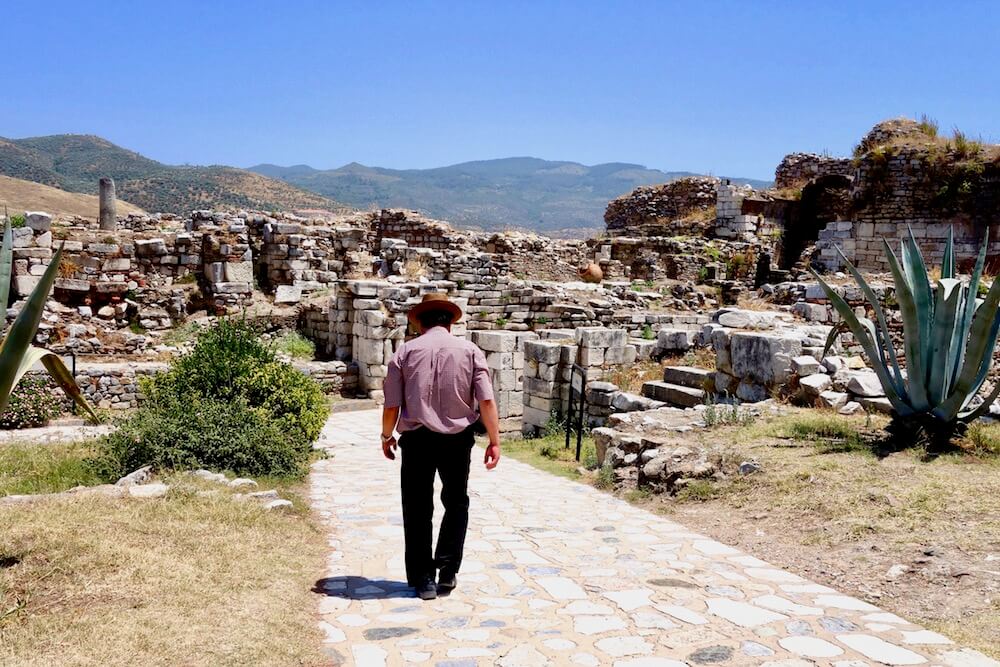
The white marble of Ephesus is a good reflector of sunlight – do be warned that the heat can be rather sweltering during summer. I was there on a hot sunny day in June, where the temperature went up to 45 degrees celsius! There isn’t much shade available besides the Terrace Houses; do arm yourself with a good hat, a pair of sunglasses and plenty of water.
It’s also recommended to wear a pair of shoes with good traction, as the marble flooring can get very slippery in places.
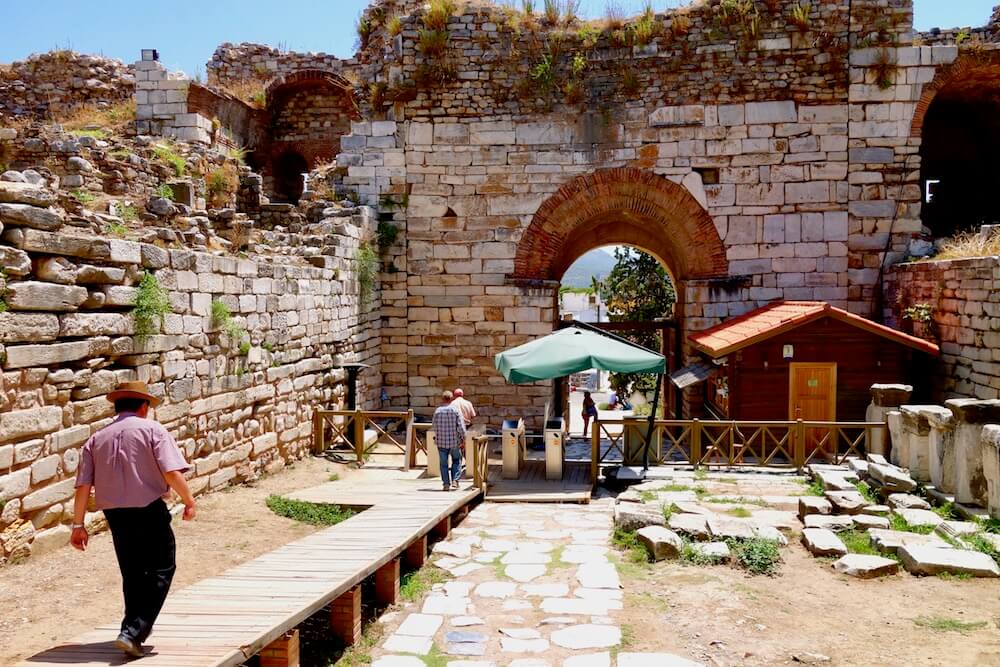
The entrance fee for Ephesus is TL40 (~SGD8), with an additional top-up of TL20 (~SGD4) for an audio guide. Ephesus is open from 8am to 6.30pm in summer (mid-April until end-September), and from 8.30am to 6pm during the rest of the year (October until mid-April).
Read: A 10-Day Turkey Itinerary for Your First Trip to the Country
Ephesus can be easily visited from the village of Selcuk, which you can use as a base to visit Pamukkale and Hierapolis, which are a 3-hour drive away, as well. Alternatively, if you’re visiting Turkey as part of a cruise, you’ll dock at the seaside town of Kusadasi, where you can take a 30-min drive or bus to Ephesus. The city of Izmir is also located about an hour from Ephesus.

0 Comments Add a Comment?